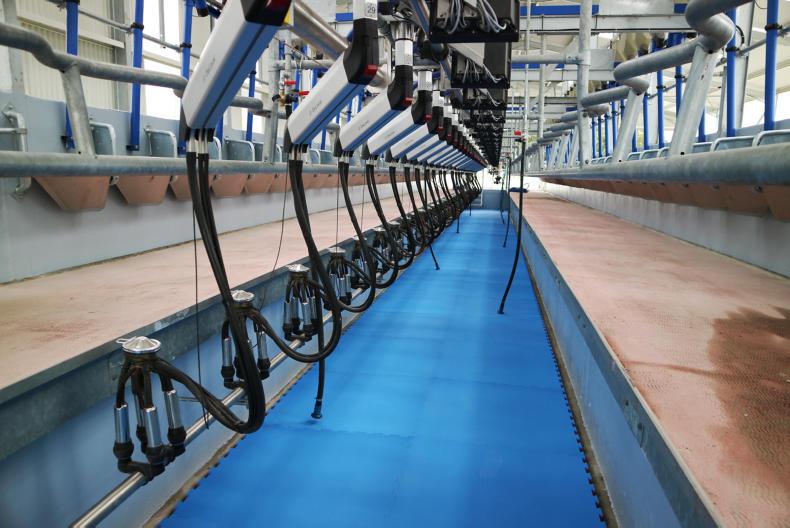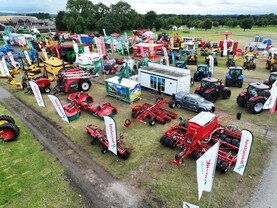Milk recording: Those thinking of using selective dry cow therapy need to do another milk recording between now and the date that the first animals are dried off.
First lactation cows that are due to calve in late January will need to be dried off in early November, to give them a 10 week dry period.
These cows are usually under the most pressure, so they need a longer dry period than other age categories. Therefore, there’s only a few weeks left to do a herd milk recording.
Even where selective dry cow therapy is not being practiced, milk recording gives us valuable information about SCC and milk solids.
Most farmers experience a spike in bulk tank SCC when cows are housed.
A combination of lower yields and poor hygiene from being inside are the likely causes. Knowing which cows are high in SCC means you can take action, such as treating affected quarters and/or early dry off.
Weather: A few weeks ago, it looked like the country would be behind the long-term average annual rainfall levels.
However, three successive weeks of high rainfall have changed that.
Achieving a good clean-out is now an ambitious feat for many farmers, particularly those on heavy land, some of whom had to house cows during prolonged downpours.
As we are now in the last round of grazing for the year, paddocks grazed now won’t be grazed again until next spring.
They will be carrying the highest covers into next year, so getting a good clean out with a clean base is desirable.
It’ll be easier to get a good clean out where silage is out of the diet, meal feeding is less than 4kg/day and cows are on 12 hour breaks.
The final date for spreading slurry is next Monday. Farmers in a nitrates derogation have to spread using a trailing shoe or dribble bar.
The fields to target with slurry are those that have been grazed and closed since 5 October and are low for P and K. Soiled water can continue to be spread even into the closed period, provided conditions are good.
Farmers usually find a good response to soiled water up to around the middle of October, so it’s better to get it out earlier rather than later.
Inflation: I was at a discussion group meeting last week where there was a debate about the merits of expansion.
The host farmer was happy with what he was doing in terms of income and on-farm efficiency. But what about in 10 years’ time?
What family income will be required then? What type of work will the farmer want to be doing? How many milkings a week does he want to do? Are children going to get the opportunity to go to college in Dublin, or anywhere else? The average cost of sending a child to Dublin is around €15,000 per year.
Meanwhile, agricultural incomes are declining, being eaten into by inflation. Inflation is increasing the cost of living and the cost of inputs – a double whammy.
Milk prices are rising at a much lower rate than inflation, which is about 2% per year.
This means that 100 cows today will only have the buying power of 80 cows in 10 years’ time.
To maintain current buying power, farmers have to keep improving, through more scale or efficiency.
Read more
Watch: state-of-the-art robot shed for greenfield site
Dairylink: better breeding increasing sales by €65,000
Milk recording: Those thinking of using selective dry cow therapy need to do another milk recording between now and the date that the first animals are dried off.
First lactation cows that are due to calve in late January will need to be dried off in early November, to give them a 10 week dry period.
These cows are usually under the most pressure, so they need a longer dry period than other age categories. Therefore, there’s only a few weeks left to do a herd milk recording.
Even where selective dry cow therapy is not being practiced, milk recording gives us valuable information about SCC and milk solids.
Most farmers experience a spike in bulk tank SCC when cows are housed.
A combination of lower yields and poor hygiene from being inside are the likely causes. Knowing which cows are high in SCC means you can take action, such as treating affected quarters and/or early dry off.
Weather: A few weeks ago, it looked like the country would be behind the long-term average annual rainfall levels.
However, three successive weeks of high rainfall have changed that.
Achieving a good clean-out is now an ambitious feat for many farmers, particularly those on heavy land, some of whom had to house cows during prolonged downpours.
As we are now in the last round of grazing for the year, paddocks grazed now won’t be grazed again until next spring.
They will be carrying the highest covers into next year, so getting a good clean out with a clean base is desirable.
It’ll be easier to get a good clean out where silage is out of the diet, meal feeding is less than 4kg/day and cows are on 12 hour breaks.
The final date for spreading slurry is next Monday. Farmers in a nitrates derogation have to spread using a trailing shoe or dribble bar.
The fields to target with slurry are those that have been grazed and closed since 5 October and are low for P and K. Soiled water can continue to be spread even into the closed period, provided conditions are good.
Farmers usually find a good response to soiled water up to around the middle of October, so it’s better to get it out earlier rather than later.
Inflation: I was at a discussion group meeting last week where there was a debate about the merits of expansion.
The host farmer was happy with what he was doing in terms of income and on-farm efficiency. But what about in 10 years’ time?
What family income will be required then? What type of work will the farmer want to be doing? How many milkings a week does he want to do? Are children going to get the opportunity to go to college in Dublin, or anywhere else? The average cost of sending a child to Dublin is around €15,000 per year.
Meanwhile, agricultural incomes are declining, being eaten into by inflation. Inflation is increasing the cost of living and the cost of inputs – a double whammy.
Milk prices are rising at a much lower rate than inflation, which is about 2% per year.
This means that 100 cows today will only have the buying power of 80 cows in 10 years’ time.
To maintain current buying power, farmers have to keep improving, through more scale or efficiency.
Read more
Watch: state-of-the-art robot shed for greenfield site
Dairylink: better breeding increasing sales by €65,000






 This is a subscriber-only article
This is a subscriber-only article









SHARING OPTIONS: